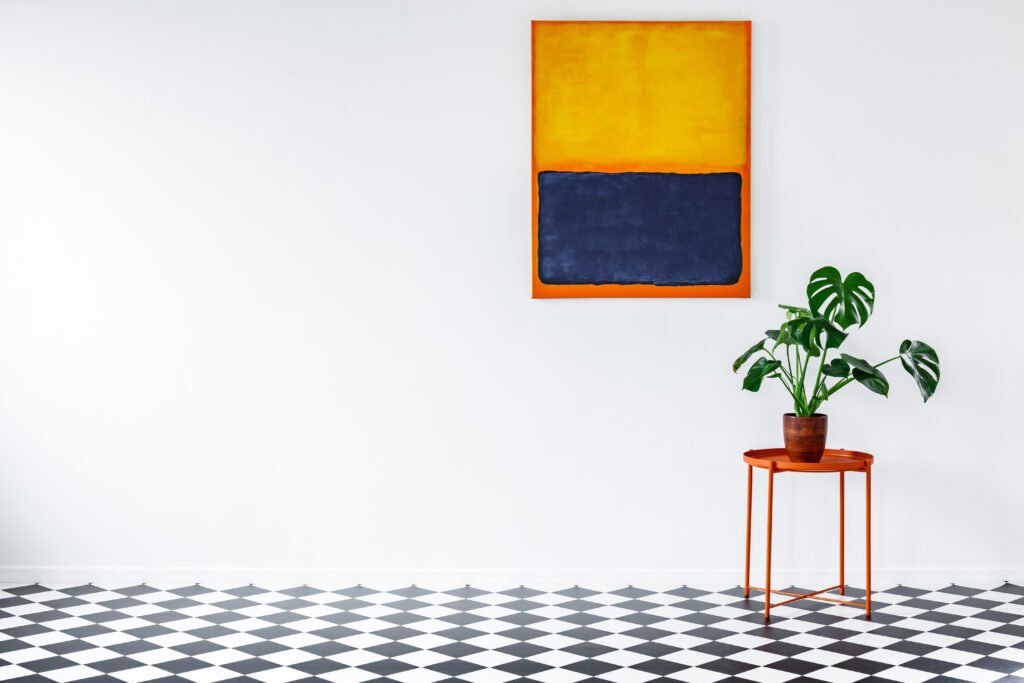Minimalism is one of the most impactful currents in modern art. It invites the eye to rest on what is essential, to find meaning in space, repetition, and the absence of excess. In a world overwhelmed by visual stimuli, minimalism offers a rare breath — a visual silence that provokes, calms, and questions.
Modern art found in minimalism a path to reframe form, function, and presence. Since the 1960s, artists like Donald Judd and Agnes Martin have influenced generations by proposing works that reject ornamentation and rely on the purity of form. But how can this “void” speak so much? Let’s explore.
What Defines Minimalism in Modern Art
Minimalism in modern art is marked by compositions reduced to the essential. Straight lines, simple geometric shapes, repetition, and a restrained use of color are central characteristics. More than that, there is a clear rejection of emotional narrative and explicit symbolism. This direct language seeks to eliminate noise — both literally and conceptually.

According to Minimalism: Art and Polemics in the Sixties (Meyer, 2001), the movement emerged as a critical response to abstract expressionism. While artists like Jackson Pollock filled their canvases with gestures and emotions, minimalists favored an almost industrial neutrality. They believed the viewer should complete the meaning of the work through personal experience. Thus, the role of the observer became active and reflective.
Renowned museums like MoMA (Museum of Modern Art in New York) today house iconic minimalist art collections, reaffirming their historical and contemporary relevance. In Donald Judd’s words, “a work’s simplicity allows it to be what it is”—no illusion, no representation, just presence.
The Impact of Visual Silence
The idea of “visual silence” is deeply connected to the power of minimalism. It’s not an absence, but a reduced presence — and therefore intensified. The lack of visual noise invites contemplation, mindfulness, and almost involuntary meditation.
Artists like Agnes Martin explored this concept through subtle grids and nearly invisible lines. In Agnes Martin: Her Life and Art (Princenthal, 2015), the author shows how Martin’s work was a spiritual search for balance and serenity. Her repeated, almost identical compositions reflected her inner peace.
Minimalism does not erase emotion — it shifts it. There is no visible drama, but tension lives in the space, the rhythm, and the repetition. That’s why the visual silence of minimalist art is not empty; it is full of meaning.
Minimalism Beyond Aesthetics
Finally, it’s essential to understand that minimalism goes beyond aesthetics. It involves ethical, political, and philosophical choices. In times of excessive consumerism, producing art that values less is, in itself, a form of critique.
Minimalist art also deeply influences contemporary design, architecture, and even digital behavior. Institutions such as Tate Modern discuss how minimalist concepts are still alive, including in digital, interactive, or environmental art forms. The logic of simplicity continues to resonate.
So, when thinking about minimalism in modern art, we must see it not as reduction, but as concentration. A way to say a lot with little — and to teach us to hear what excess usually drowns out.



